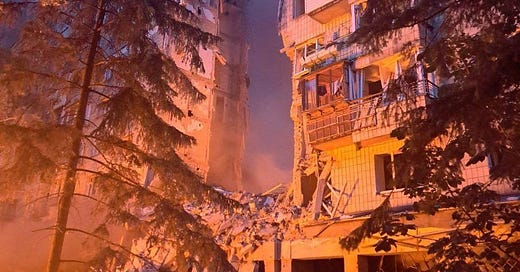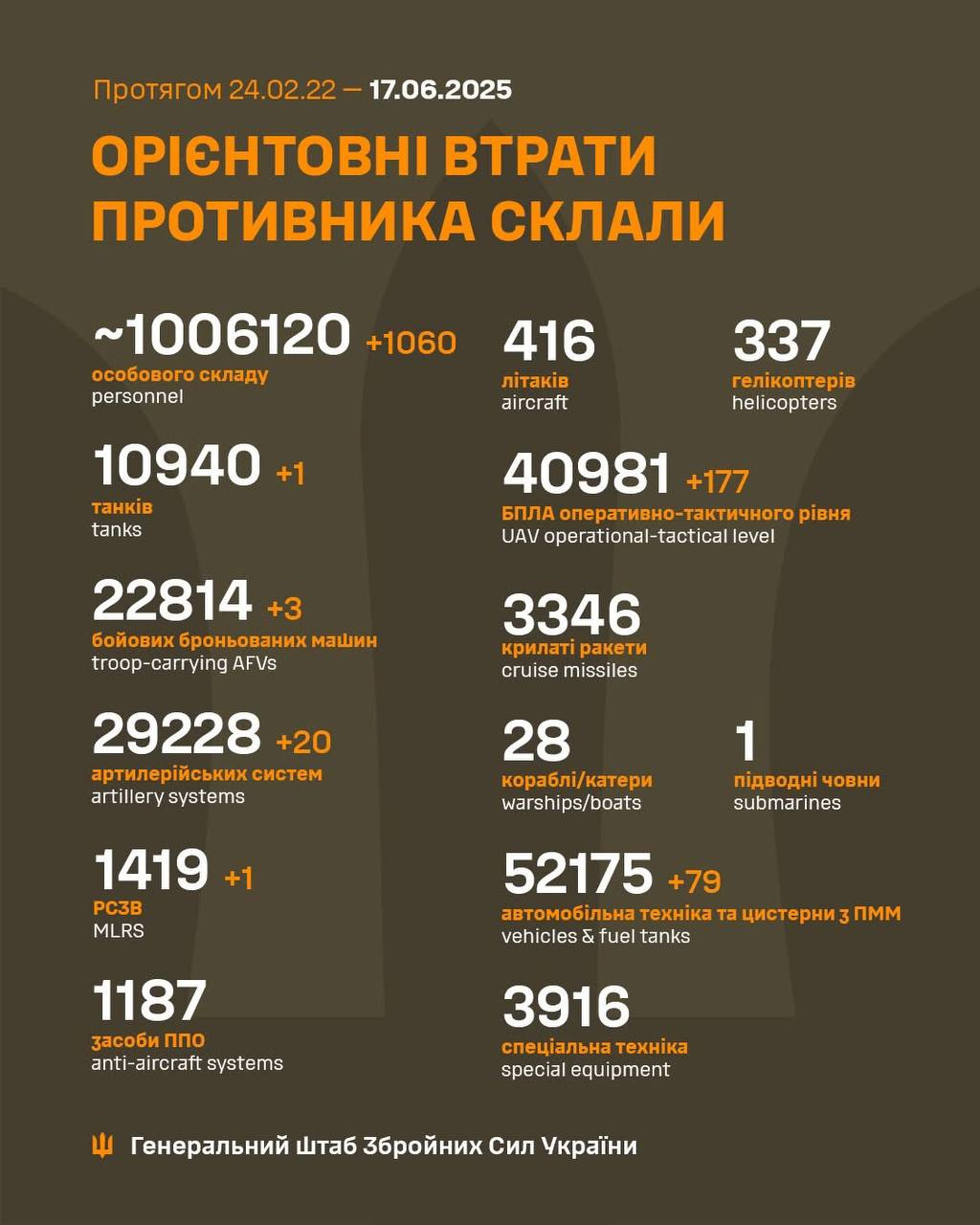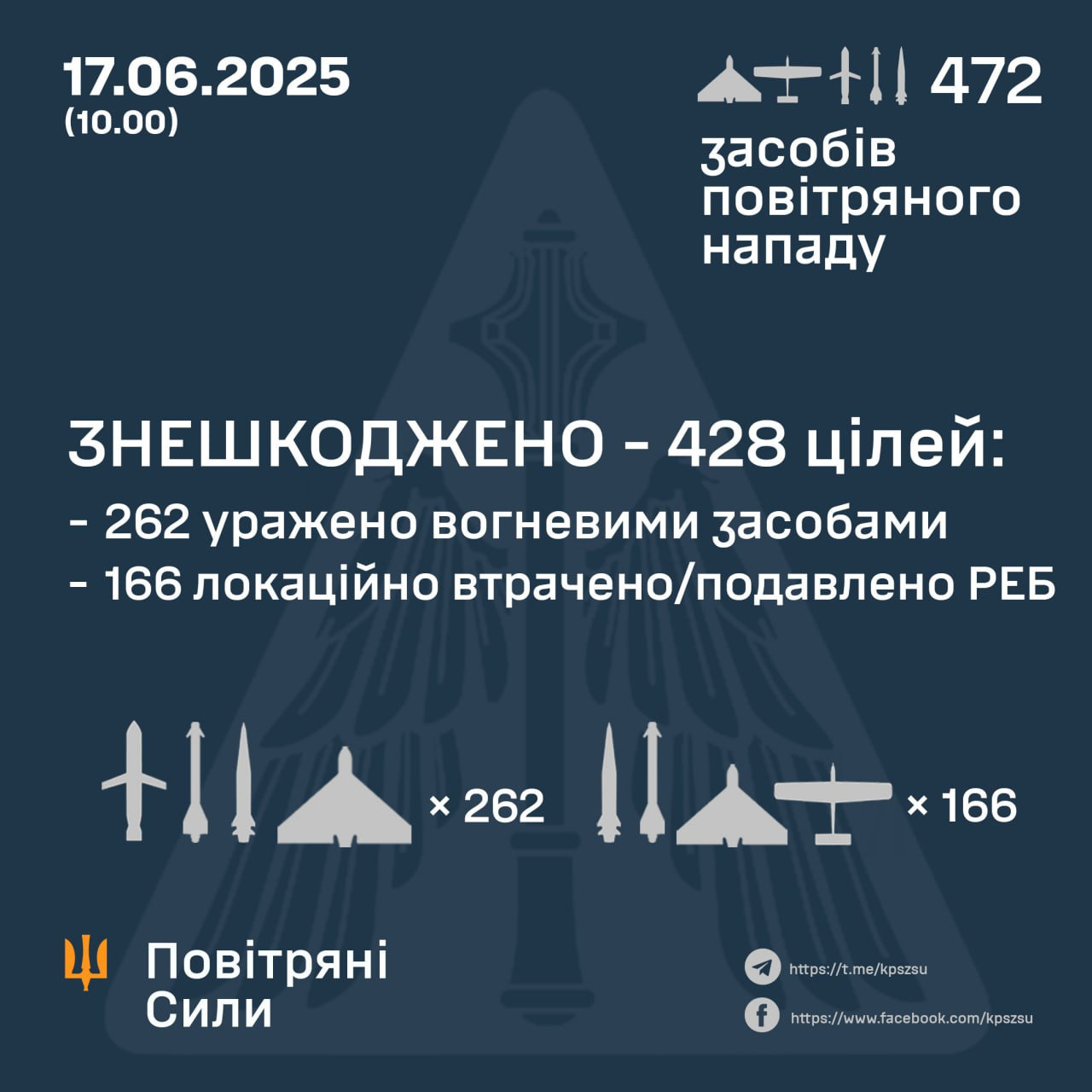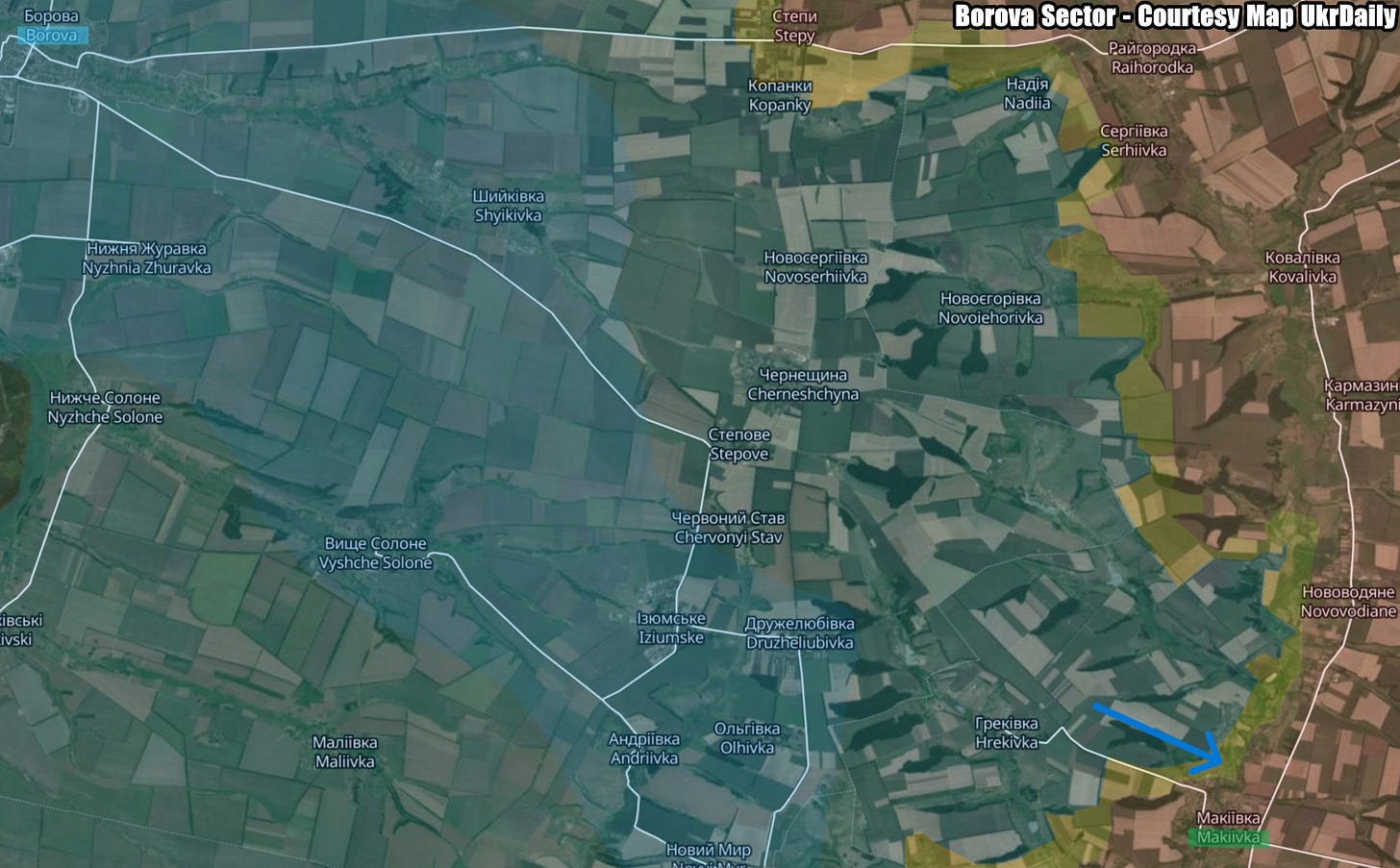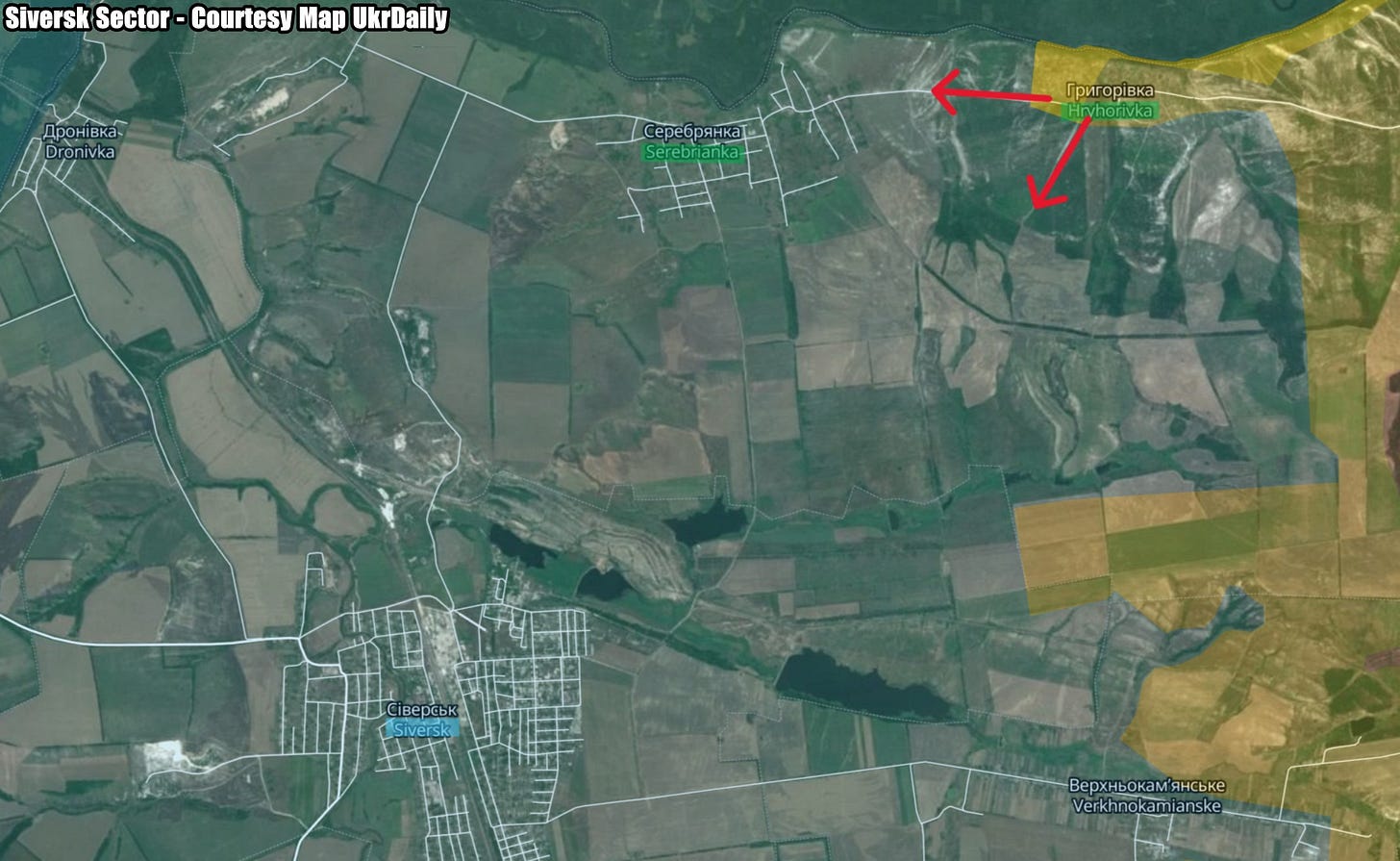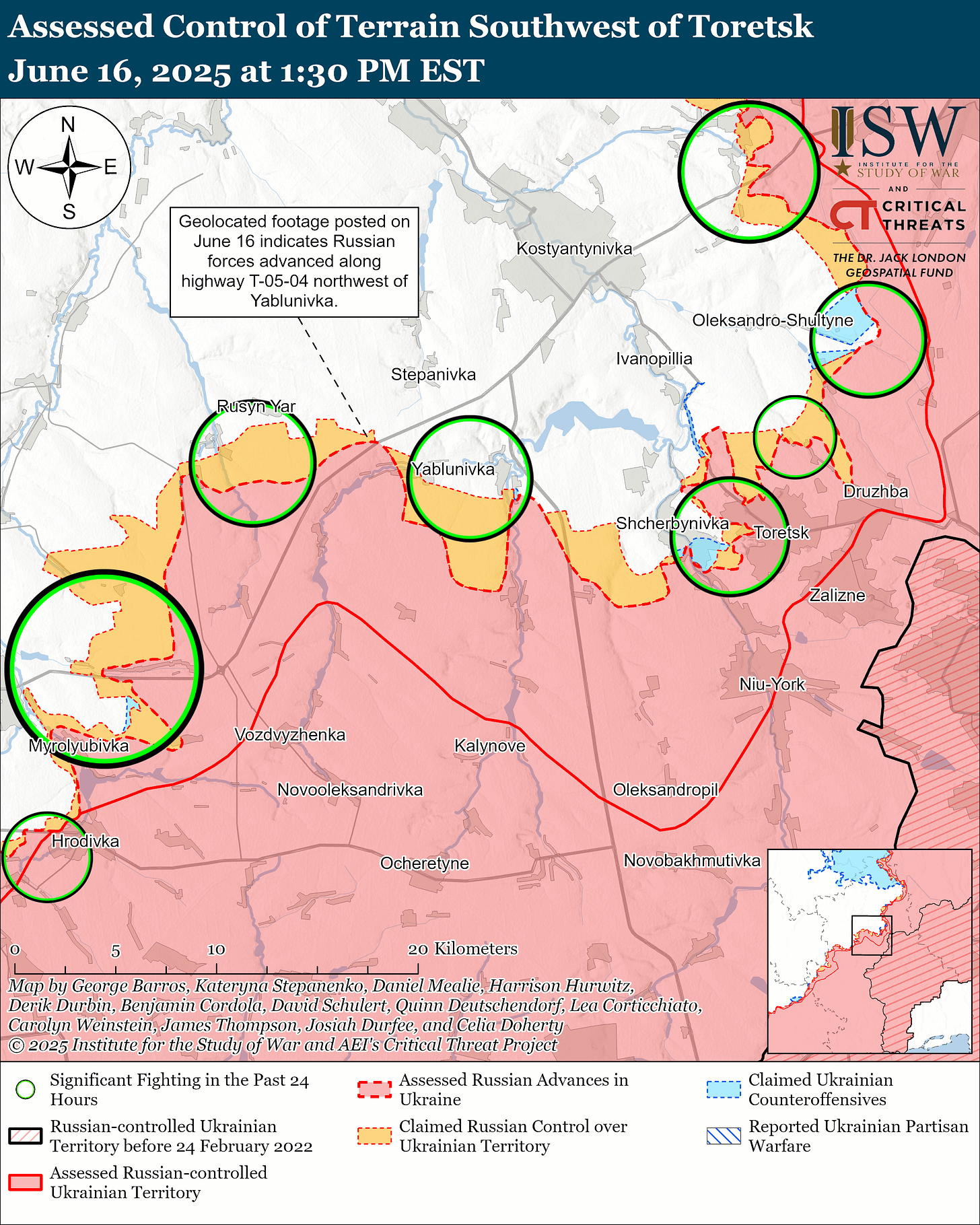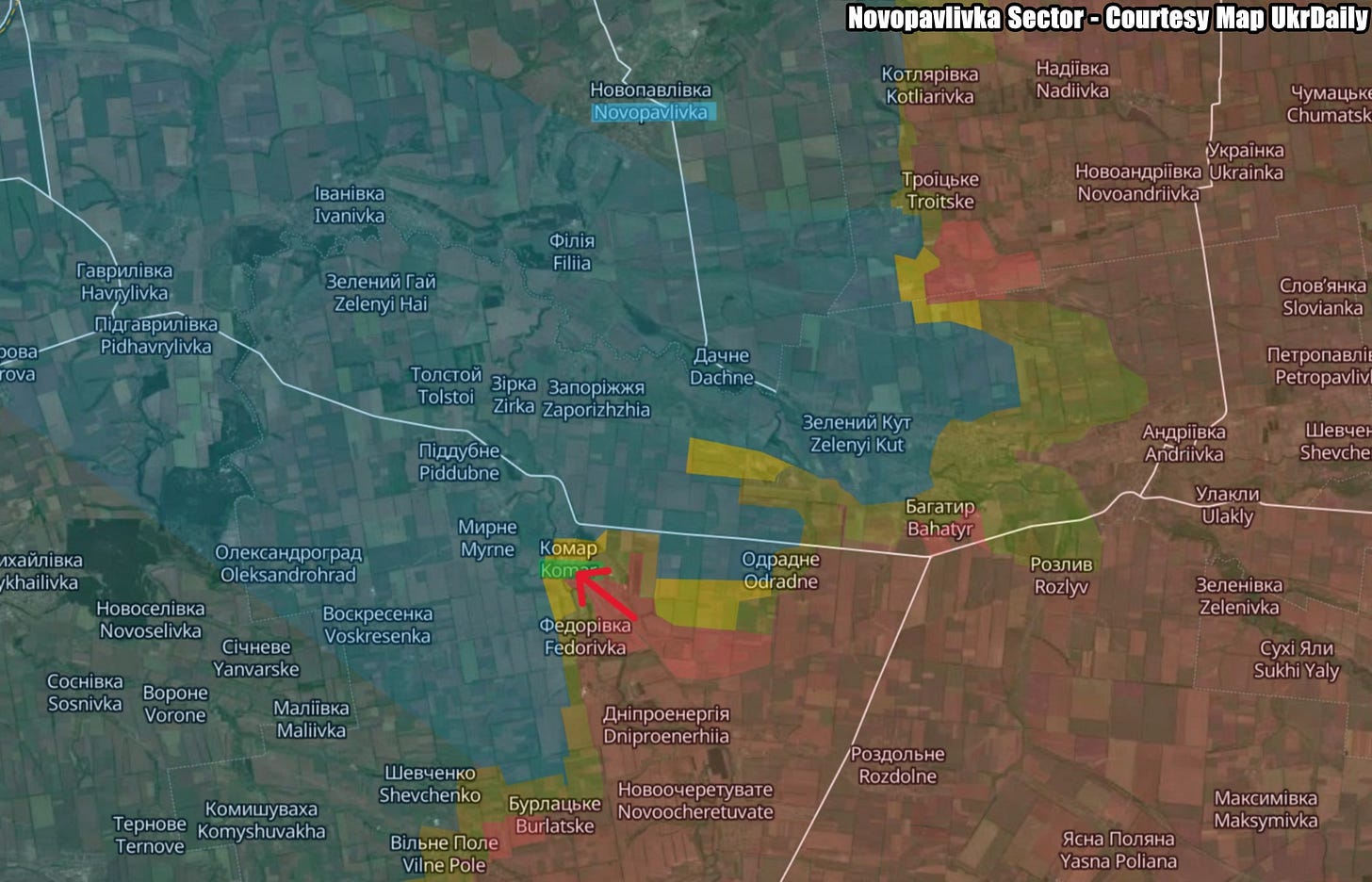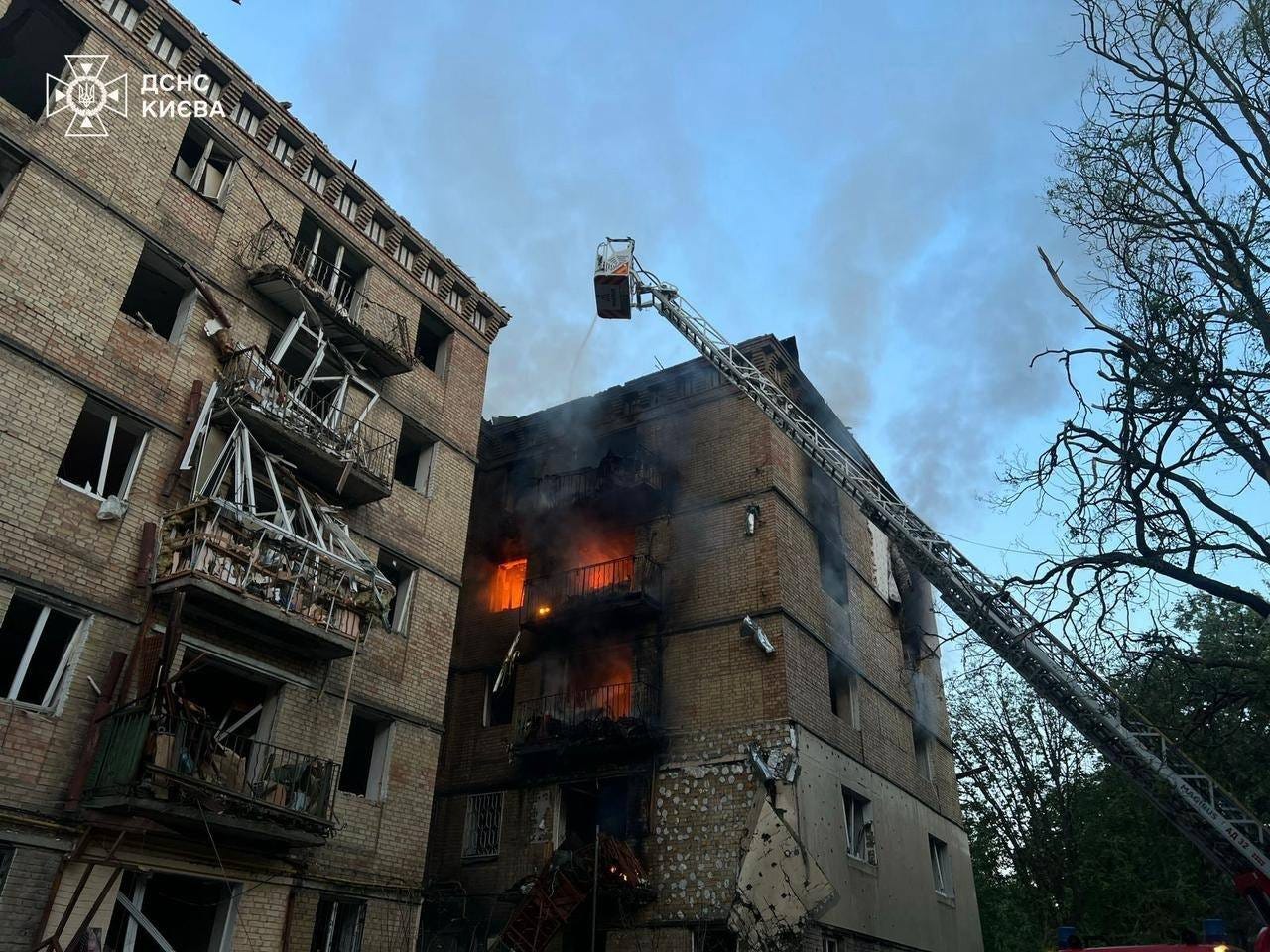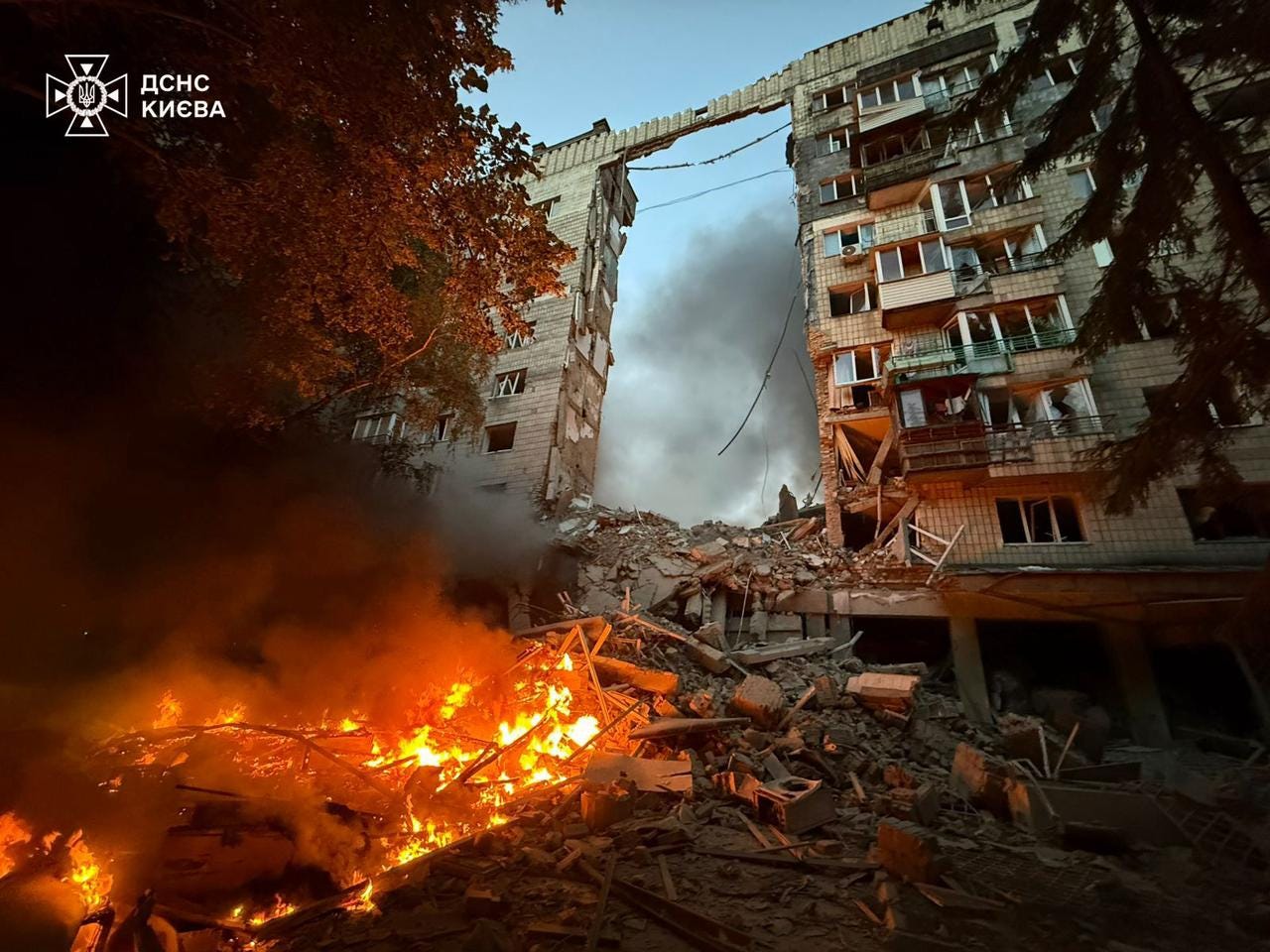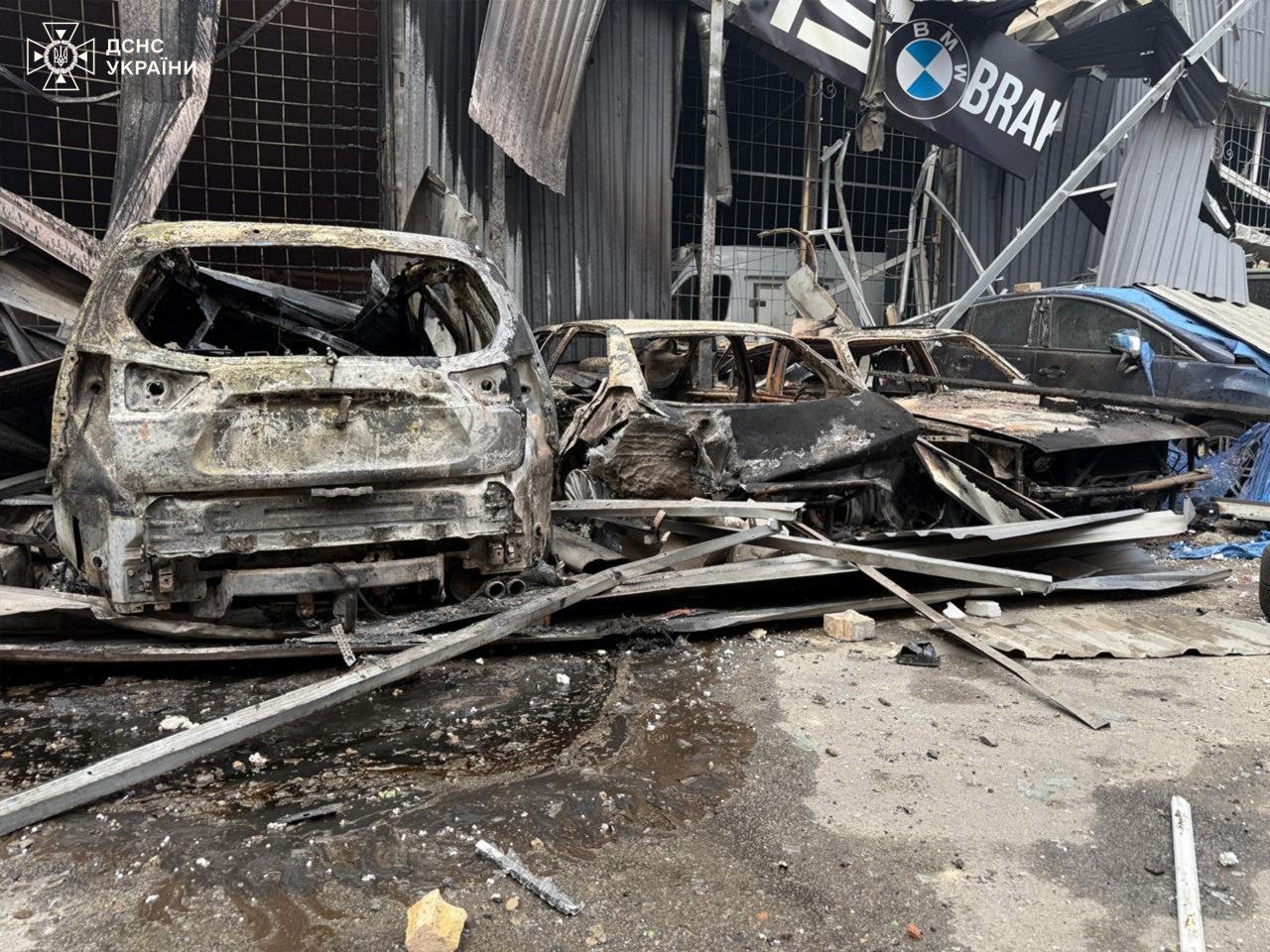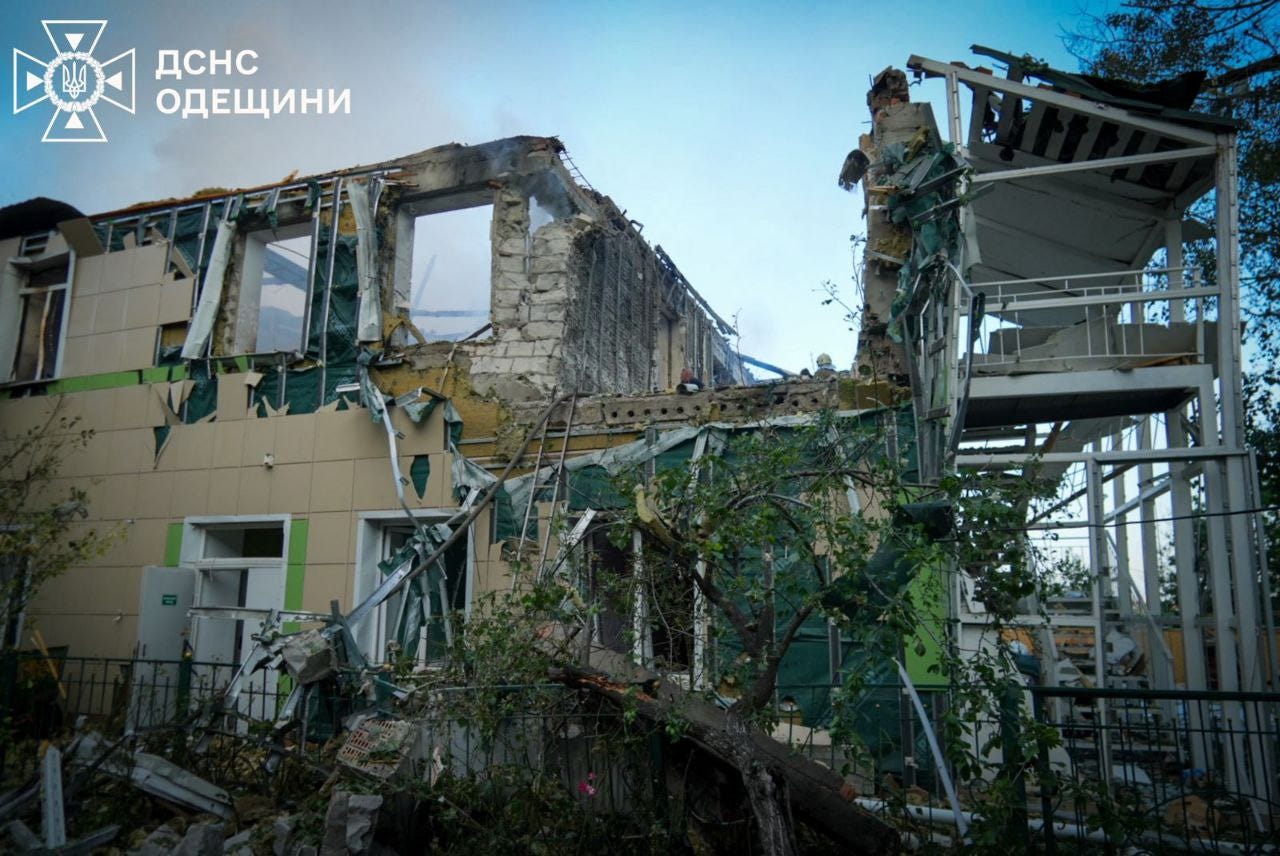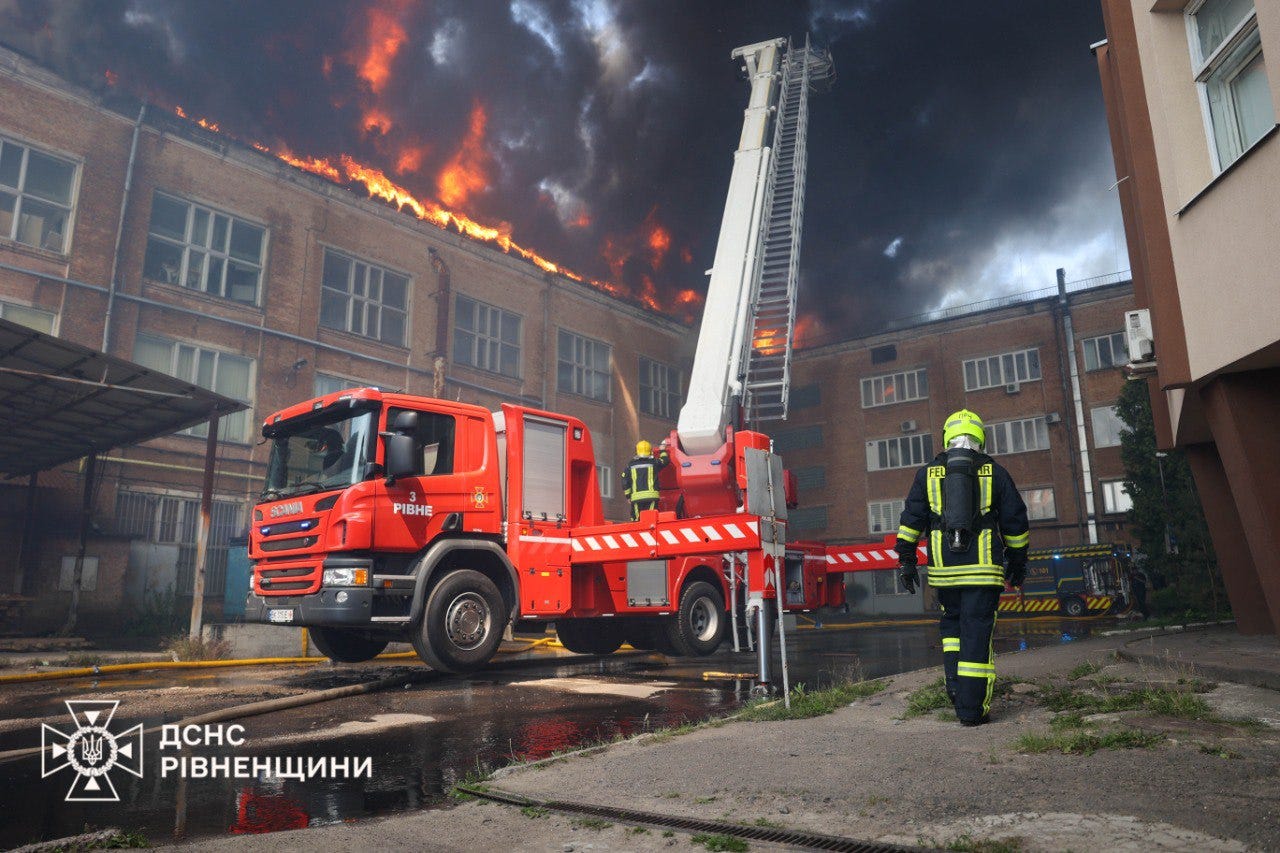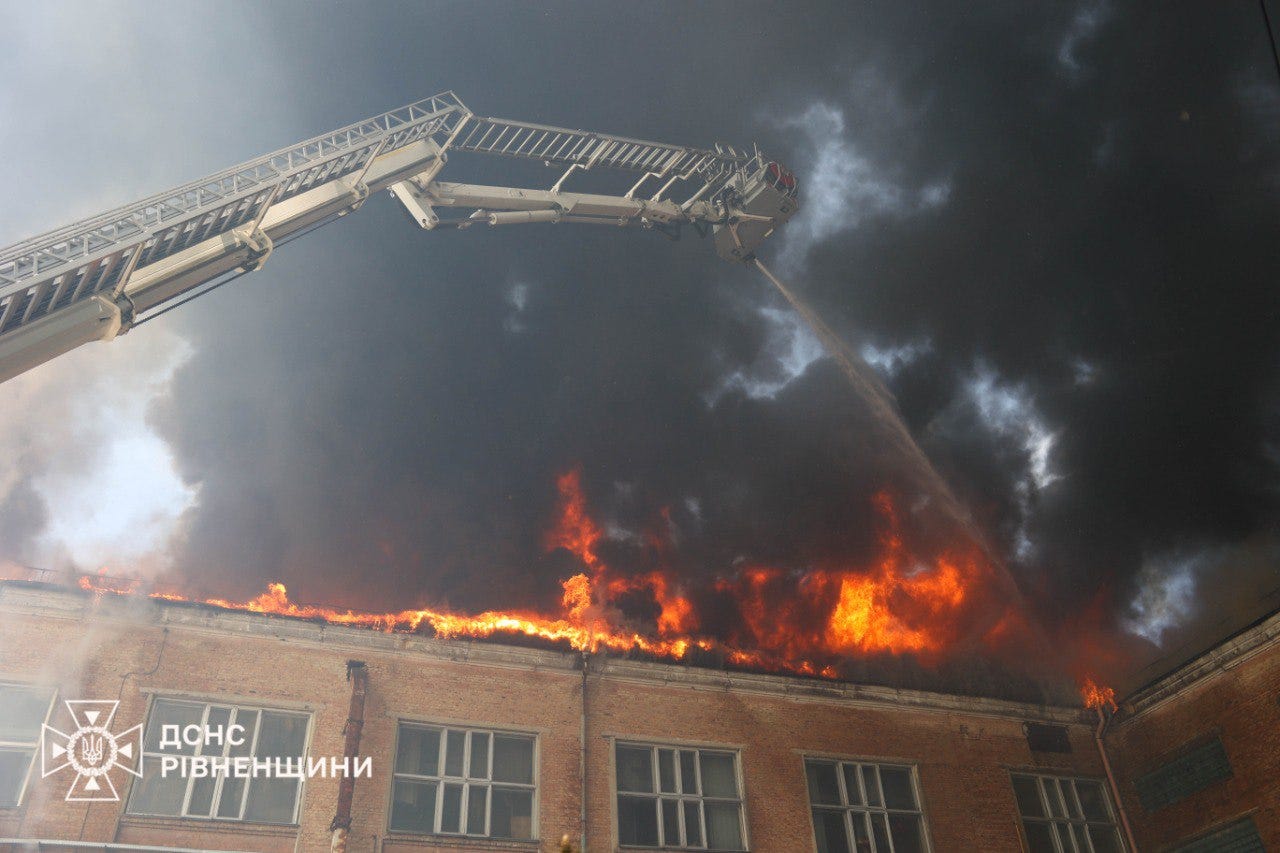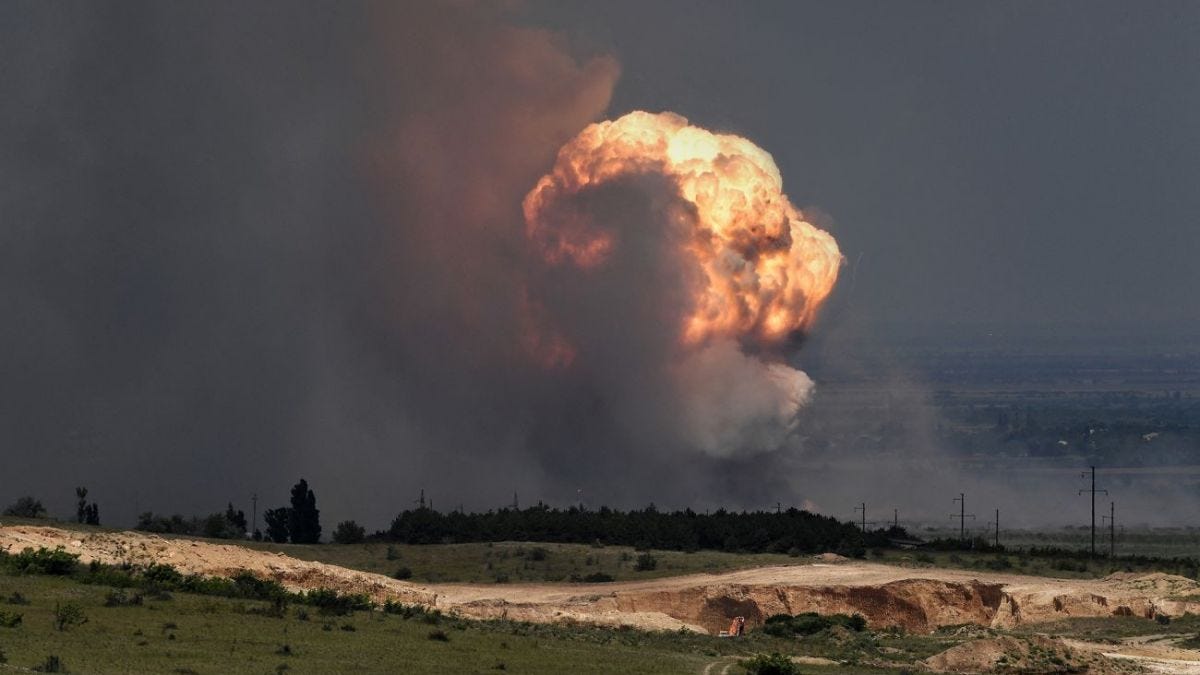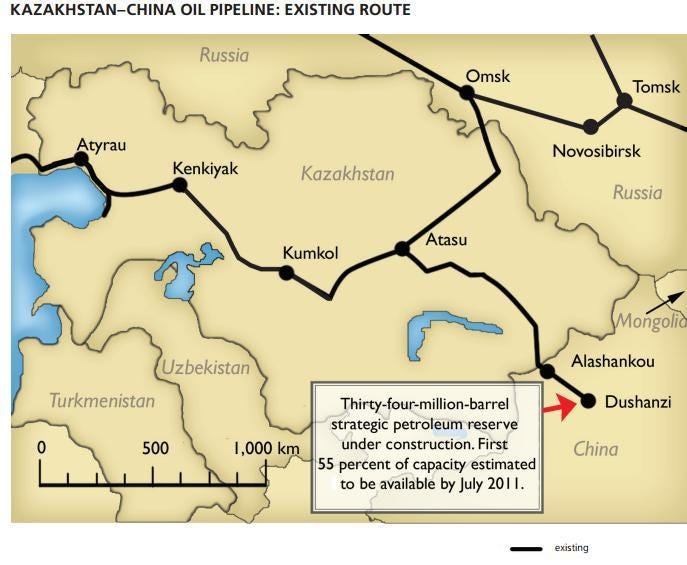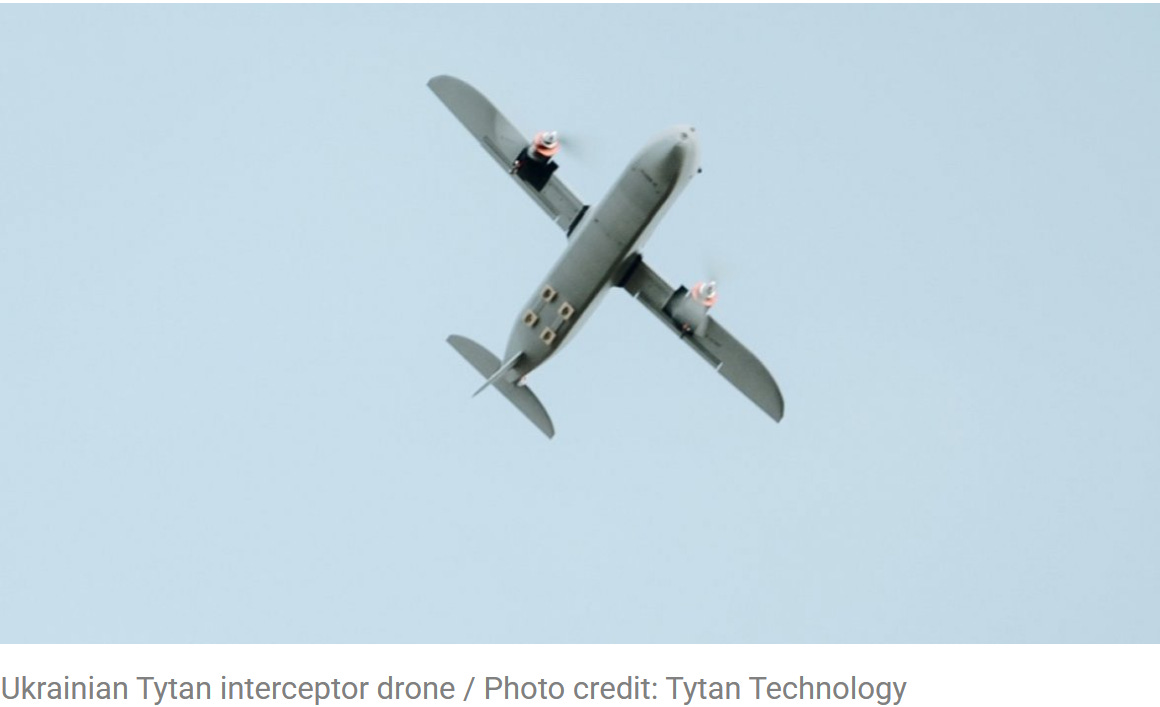Slava Ukraini! In early 2022 I began a Telegram channel aggregating news from a number of sources daily on the war in Ukraine. In June 2023 I began providing a daily draft for the Ukraine War Brief Podcast collecting news from over 70 sources daily, which formed the basis of the script. While the Podcast no longer exists I have continued to make this Brief available for my subscriberss here on Substack and anyone who wishes to keep up with the news from the war.
If you find the Brief informative I would appreciate it if you shared it with others.
All the latest news on the Russo-Ukraine War 6 days per week
ALONG THE CONTACT LINE
GSAFU Morning Report
For: Jun 17,2025
The General Staff of the Armed Forces of Ukraine in its Operational Information update at 08:00 on Jun 17 stated that day 1210 of the full-scale invasion of the Russian Federation against Ukraine had begun.
The situation on the line of combat remains tense in some sectors. Ukrainian defenders continue to actively counteract the Russian aggressor, causing them significant losses in personnel, equipment and technology. Exhausting the enemy along the entire front line and continuing to disrupt the plans of Russian occupiers to advance deeper into the territory of Ukraine.
Over the past 24 hours, aviation, missile troops and artillery of the Defense Forces have hit eight areas of personnel, weapons and military equipment concentration, five artillery supplies and one other important enemy object.
During the past day, 186 combat engagements took place.
Over the past 24 hours, the enemy carried out 2 missile strikes, 56 air strikes, used 3226 attack drones and fired approximately 5,500 artillery shells across the positions of Ukrainian forces and civilians.
Air Force Daily Report
428 ENEMY TARGETS DESTROYED
➖➖➖➖➖➖➖➖➖
On the night of June 17 (from 8:00 p.m. on June 16), the enemy attacked 472 air attack vehicles:
- 440 Shahed attack UAVs and simulator drones of various types from the following directions: Kursk, Shatalovo, Orel, Bryansk, Millerovo, Primorsko-Akhtarsk - Russia, about 280 of them are "Shaheeds";
- 2 Kh-47M2 Kinzhal aeroballistic missiles from the airspace of the Tambov region - Russia;
- 16 Kh-101 cruise missiles from strategic aircraft from the airspace of the Saratov region - Russia;
- 4 "Caliber" cruise missiles from the Black Sea;
- 9 Kh-59/69 guided aircraft missiles from tactical aircraft from the airspace of the Belgorod and Bryansk regions;
- 1 Kh-31P anti-radar missile.
The main direction of the attack was the city of Kyiv!
The air attack was repelled by aviation, anti-aircraft missile troops, electronic warfare and unmanned systems units, and mobile fire groups of the Defense Forces of Ukraine.
According to preliminary data, as of 10:00, air defenses had neutralized 428 enemy air attack vehicles, 262 were shot down by fire weapons, and 166 were lost in location:
- 239 enemy Shahed-type UAVs (drones of other types) were shot down by fire, 163 were lost/suppressed by electronic warfare;
- 2 aeroballistic Kh-47 M2 "Dagger" (1 - second-hand);
- 15 Kh-101 cruise missiles;
- 8 Kh-59/69 guided aircraft missiles (1 - loc. vt.);
- 1 anti-radar missile Kh-31P (loc. vtr.).
Enemy airstrikes were recorded in 10 locations, and downed aircraft (fragments) fell in 34 locations.
We express our condolences to the families of the deceased and the injured...
Combat Operations in the Russian Federation
There has been no significant change in the combat environment in this sector since our last report.
The Khortytsia operational-strategic group
(Responsible for the northeastern part of Ukraine. )
Sumy Sector: Russian forces recently advanced in Sumy Oblast.
Geolocated footage published on June 16 shows Ukrainian force striking Russian positions in southwestern Kindrativka (north of Sumy City), indicating that Russian forces recently seized the settlement.
Borova Sector: Ukrainian forces recently advanced in the Borova direction.
Geolocated footage published on June 15 indicates that Ukrainian forces recently advanced northwest of Makiivka (southeast of Borova).
Siversk Sector: Russian forces recently advanced in the Siversk direction.
Geolocated footage published on June 16 indicates that Russian forces recently advanced southwest of Hyrhorivka and along Raiko Depreradovycha Street east of Serebryanka (both northeast of Siversk).
Toretsk Sector: Russian forces recently advanced in the Toretsk direction.
Geolocated footage published on June 16 indicates that Russian forces recently advanced along the T-0504 Pokrovsk-Kostyantynivka highway northwest of Yablunivka (northwest of Toretsk) and in western Yablunivka.
The Tavria operational-strategic group
(Responsible for the central-eastern and southeastern part of Ukraine.)
Novopavlivka Sector: Russian forces recently advanced in the Novopavlivka direction.
Geolocated footage published on June 16 indicates that Russian forces recently advanced in eastern Komar (south of Novopavlivka).
Zaporizhia Sector: Ukrainian forces recently marginally advanced in western Zaporizhia Oblast.
Geolocated footage published on June 15 indicates that Ukrainian forces recently marginally advanced west of Myrne (east of Orikhiv).
The Odesa operational-strategic group
(Responsible for Kherson, Qırım, (also known as Crimea) and the Black Sea.)
There has been no significant change in the combat environment in this sector since our last report.
TEMPORARILY OCCUPIED TERRITORIES
Nothing major to report.
THE HOME FRONT
Massive Russian missile and drone attack hits Kyiv, killing 15, injuring at least 124.
At least 15 people have been killed and 124 others injured after a mass Russian missile and drone attack on Kyiv overnight on Jun 17, the Kyiv Independent reported citing local officials.
The almost nine-hour long attack saw Moscow's forces launch large numbers of kamikaze attack drones, as well as cruise and ballistic missiles at Ukraine's capital.
Kyiv Independent journalists on the ground reported the sounds of drones, missiles, and multiple rounds of explosions throughout the night.
15 people have been killed and at least 124 people have been injured, according to the latest reports.
President Volodymyr Zelenskyy called the assault "one of the most horrifying attacks on Kyiv," saying more than 440 drones and 32 missiles were launched across Ukraine overnight.
"Such attacks are pure terrorism," he said in a statement on social media. "And the whole world, the U.S., and Europe must finally respond as civilized societies respond to terrorists."
Zelensky confirmed that damage had been reported in eight districts of Kyiv, with emergency workers still searching for survivors beneath the rubble of a destroyed apartment block.
In a video posted on Telegram, Kyiv Mayor Vitali Klitschko said cluster munitions had been found in one area of the city. He later added that Jun 18 would be an official day of mourning in Kyiv.
Many of the deaths and injuries occured when a Russian missile hit a nine-storey residential building in the Solomianskyi district, "completely destroying" one section, Ukraine's State Emergency Service said.
During the attack on the capital, a 62-year-old U.S. citizen died in the Solomianskyi district in a building across from where medics were assisting the injured, Klitschko reported. Medical personnel confirmed biological death.
Foreign Minister Andrii Sybiha also condemned the attack, calling it a "massive and brutal strike" timed deliberately to coincide with the G7 summit.
"Putin does this on purpose... He sends a signal of total disrespect to the United States and other partners who have called for an end to the killing," Sybiha said. "Only strong steps and real pressure on Moscow can prove him wrong."
A Russian drone also hit a multi-storey building Darnytskyi District.
A kindergarten in the Darnytskyi district was also damaged, Tymur Tkachenko, the head of the Kyiv City Military Administration said. No casualties were reported at the site.
The upper floors of residential buildings in the Solomianskyi and Shevchenkivskyi districts were also damaged.
A dormitory at the Kyiv Aviation Institute was hit by drones during the attack, the news outlet Suspilne reported. Drones struck the institute's 10th floor and broke windows on three others.
Outside the capital, the attacks also caused damage and injured civilians in Kyiv Oblast towns. At least one woman was injured and multiple homes damaged, according to the regional administration.
The Russian strike damaged the production facility of Fahrenheit, a Ukrainian clothing manufacturer that supplies apparel and undergarments for both civilians and the military. The company announced it was forced to cancel all current orders and suspend new ones indefinitely following the destruction of its Kyiv site.
Russian forces also hit a Ukrainian Railways (Ukrzaliznytsia) freight train carrying grain. Several railcars overturned, temporarily halting operations and spilling grain from the damaged wagons. Ukrzaliznytsia said the damage would be "promptly repaired" and train traffic would not be affected.
Ukrposhta, Ukraine's national postal service, reported the destruction of two of its branches in Kyiv during the attack, according to CEO Ihor Smiliansky. The company's team is working to "quickly restore services," he said.
The attack followed a series of drone strikes overnight on June 16 targeting Kyiv Oblast, including both the capital and surrounding settlements. In the Obukhiv district, a 60-year-old man was injured, according to regional authorities.
Russian attacks against Ukraine have intensified in May and June, with Moscow launching several record-breaking mass strikes against Kyiv and other cities.
Cluster munitions used in overnight Russian strike on Ukraine.
Emergency services in Kyiv have recovered fragments of cluster munitions following the overnight Russian missile and drone attack on June 17, Mayor Vitali Klitschko reported in a statement shared on social media calling it further evidence of Russia's "genocide" against Ukrainians.
"In the capital's Nyvky neighborhood, emergency workers are now finding these kinds of cluster munition parts," Klitschko said. "Another clear sign of the genocide Russia is committing against Ukrainians."
Cluster munitions are banned under international law by more than 100 countries due to their indiscriminate nature and the long-term threat they pose to civilians, especially when unexploded submunitions remain hidden in residential areas.
While Russia and Ukraine are not signatories to the Convention on Cluster Munitions, international humanitarian organizations have repeatedly condemned the use of such weapons in populated areas. Ukraine uses cluster munitions on the battlefield against Russian forces.
The mayor's comments came hours after one of the largest and deadliest attacks on the Ukrainian capital in months, in which at least 15 people were killed and nearly 100 injured. The Russian strike, which lasted nearly nine hours, included waves of kamikaze drones, ballistic missiles, and what authorities now confirm were banned explosive parts.
Russian drone strike on Odesa kill 1, injures 17, including 1 child.
Russian drone strikes on Odesa early Jun 17 killed 1 person and injured 17 others, including a pregnant woman and a child, the Kyiv Independent reported citing regional authorities.
The body of a 60-year-old woman was recovered from beneath the rubble of a destroyed building. "My sincere condolences to her family and loved ones," Odesa Oblast Governor Oleh Kiper wrote. Search efforts are still underway for another missing woman, with authorities expressing hope she will be found alive.
One person remains hospitalized as of 9 a.m., while the rest of the injured are receiving outpatient treatment.
The strike damaged multiple residential buildings in Odesa’s historic city center, as well as a kindergarten and an inclusive support center. Emergency services and volunteers continue clearing debris and responding to the aftermath.
The attack also damaged civilian infrastructure across the city, including residential buildings.
Emergency services and volunteers are working at the scene to clear debris.
Odesa, a port city on Ukraine’s Black Sea coast with a population of around 1 million, has been a frequent target of Russian attacks throughout the full-scale war.
As a Result of Russia’s attack a building was also seriously damaged in the city of Rivne in North Western Ukraine.
The attack resulted in a major fire.
RUSSIAN WORLD
Russian military-industrial chemical plant halts operations after Ukrainian drone strike.
The Nevinnomyssk Azot chemical plant — one of Russia’s largest producers of nitrogen fertilizer and ammonia and a key supplier to the Kremlin's military-industrial complex — has suspended production, Russian independent media outlet Astra reported on Jun 16.
According to Astra, the chemical plant suspended production as a direct result of Ukrainian drone strikes. The strike — which was confirmed by Ukraine’s General Staff on June 14 — targeted two major military-industrial facilities in Russia, including the Nevinnomyssk Azot plant in Stavropol Krai. The facility reportedly supplied raw materials and components for Russia’s weapons and fuel production.
Nevinnomyssk Azot is among Russia's top producers of ammonia and nitrogen fertilizers and hosts the country’s only production lines for methyl acetate and high-purity acetic acid. It also operates Russia’s first melamine production facility, according to open-source data.
According to Andrii Kovalenko, head of Ukraine's Center for Countering Disinformation at the National Security and Defense Council, the plant produces up to one million tons of ammonia and over one million tons of ammonium nitrate annually, is "a critical element of Russia's military-industrial complex."
Kovalenko noted that ammonium nitrate is a key component for explosives and artillery shells. He added that the plant also synthesizes dual-use chemicals such as melamine, acetic acid, methanol, and potassium nitrate — all frequently used in the production of grenade launchers, mines, and rocket charges.
Since 2024, the plant has also been producing water-soluble fertilizers, which he said have been adapted to serve military chemical needs as part of Russia's war in Ukraine.
The chemical plant is part of the EuroChem Group, owned by Russian billionaire Andrey Melnichenko, who is currently sanctioned by Canada, the European Union, Japan, and the United Kingdom.
North Korea to Deploy at Least 6000 Troops to Kursk region.
The DPRK has decided to send at least 6,000 military personnel to Russia to arrive in Kursk.
Russian Security Council Secretary Sergei Shoigu confirmed these plans after talks with DPRK leader Kim Jong-un.
The military is being sent to Russia to allegedly participate in restoring the Kursk region.
As we previously reported, DPRK troops lost over 6,000 soldiers during offensive operations against Ukrainian troops in the Kursk region.
The total number of casualties is more than half of the approximately 11,000 DPRK troops originally deployed in the Kursk region.
Earlier on Tuesday, Shoigu arrived in the DPRK on behalf of Russian President Vladimir Putin, where he held talks with Kim Jong-un.
Shoigu’s previous visit to North Korea took place on June 4. During that meeting, the Secretary of the Russian Security Council and the DPRK leader discussed the development of bilateral relations, the war with Ukraine, and certain Comprehensive Strategic Partnership Agreement provisions.
Russia and the DPRK have a Comprehensive Strategic Partnership Agreement signed in Pyongyang on June 19, 2024. Both sides ratified it in November.
North Korea supplies Russia with artillery shells, missiles, mortars, and other artillery that Russia uses in its war against Ukraine.
In addition to the already known 170-mm Koksan self-propelled artillery systems and 240-mm M1991 multiple launch rocket systems, other military equipment, including mortars and compact missile systems, has also appeared.
Moscow negotiating increased oil supply to China through Kazakhstan.
Russia is negotiating with Kazakhstan to increase oil transit to China by 2.5 million tons annually through the Atasu-Alashankou pipeline, with no set timeline for agreement, Kazakhstan’s Energy Minister Erlan Akkenzhenov said on June 17, Russia’s news agency Interfax reported.
"10 million tons plus 2.5 million tons. The negotiation process does not have a specific deadline. Therefore, as soon as the parties reach a mutual agreement, we will sign it," Akkenzhenov said.
China has reportedly offered Russia to increase oil supplies through Kazakhstan by 2.5 million tons per year.
Bolat Akchulakov, the head of the Kazenergy oil service companies association, previously stated that the technical capacity of the Atasu-Alashankou oil pipeline from Kazakhstan to China makes it possible to increase the transportation of Russian oil to China by the previously requested 2.5 million tons or even more, as the pipeline is currently only slightly more than half of its design capacity.
Increasing transit by 2-3 million tons is not critical for a pipeline with a capacity of 20 million tons, he added.
Kazakhstan-China Pipeline LLP, a joint venture between Kazakhstan and China, is engaged in the supply of Kazakh oil and the transit of Russian oil to China. Its founders: KazTransOil JSC (50%) and China National Oil and Gas Exploration and Development Corporation (CNODC) - also 50%. The company transports oil via the Kenkiyak-Kumkol and Atasu-Alashankou oil pipeline sections from fields in western Kazakhstan to China. Russian oil is transported via the Atasu-Alashankou section.
RELATED INTERNATIONAL NEWS
US cancels talks with Russia on restoring diplomatic relations.
The U.S. has canceled the next round of talks with Russia on restoring diplomatic relations, the Kyiv Independent reported citing Russian Foreign Ministry spokesperson Maria Zakharova on June 16.
Zakharova's statement came days after Russian Ambassador to the U.S. Alexander Darchiev announced that delegations from both countries were expected to meet in Moscow in the near future.
The planned talks were supposed to be part of discussions between the U.S. and Russia that focused on peace efforts in Ukraine and the resumption of bilateral ties.
According to Zakharova, the upcoming round was intended to "eliminate irritants" and help normalize the operations of both nations' diplomatic missions.
"We hope that the pause taken by them (the U.S.) will not become too long," the Russian spokesperson said.
Washington has yet to comment on Zakharova's claims.
The first talks since the start of Russia's full-scale war against Ukraine took place on Feb. 18 in Riyadh, where the two sides discussed bilateral relations, a potential presidential meeting, and ways on ending Russia's war against Ukraine.
Darchiev said that during the recent round of talks on April 10 in Istanbul, the two sides agreed to move future consultations to their respective capitals.
The U.S. State Department described the April 10 talks in Istanbul as having a "constructive approach." The closed-door consultations lasted about six hours and focused on ensuring stable banking services for diplomatic missions. Both delegations exchanged notes on the issue and agreed to continue discussions.
The diplomatic push continues amid efforts by U.S. President Donald Trump to broker a ceasefire and peace agreement in Ukraine. Trump suggested on June 5 that it may be better to let the conflict continue for now, likening the war to a fight between children that should not be interrupted too quickly.
Kyiv and its allies remain skeptical of Trump's approach toward peace efforts.
President Volodymyr Zelenskyy has repeatedly called for stronger U.S. action and warned that "America’s silence, and the silence of others around the world, only encourages (Russian President Vladimir) Putin."
UK announces new sanctions against Russia.
Britain on Tuesday announced further sanctions against Russia over the war in Ukraine, in what Prime Minister Keir Starmer described as part of a coordinated move by the Group of Seven (G7) countries, Reuters reported on Jun 17.
A notice posted on the government website said Britain's latest sanctions targeted four individuals, six entities and 20 ships, including oil tankers, marine-related companies, and suppliers of goods to Russia - particularly electronics.
Starmer is expected to set out details of the sanctions later on Tuesday from a G7 summit in Canada.
He will say he wants "to work with all of our G7 partners to squeeze Russia's energy revenues and reduce the funds they are able to pour into their illegal war," according to advance excerpts of his remarks released by his office.
Britain has already sanctioned over 2,300 individuals, entities and ships as part of sanctions against Russia since the 2022 invasion of Ukraine.
"We should take this moment to increase economic pressure and show President (Vladimir) Putin it is in his - and Russia’s interests - to demonstrate he is serious about peace," Starmer is expected to say.
MILITARY & TECH
Zelenskyy Unveils Plans for Domestic Drone-Based Air Defense System.
Volodymyr Zelenskyy confirmed that, while some systems remain in development, Ukraine is securing funds for mass production of interceptor UAVs, Defense Express reports.
During the Ukraine-Southeast Europe Summit in Odesa on June 11, President of Ukraine Volodymyr Zelenskyy announced that Ukrainian specialists are actively developing new interceptor drones to protect critical energy infrastructure from russian aerial attacks.
Zelenskyy emphasized that while some of these defense technologies are still in development, others have already been created. The current priority is to secure additional funding to enable large-scale production of these systems. He specifically highlighted various types of interceptor drones being considered for mass deployment.
He acknowledged the immense financial burden that air defense imposes on Ukraine. "We are spending a lot of money on air defense, and it is never enough," he stated. Despite these constraints, he reaffirmed that air defense remains the top priority in protecting the country from Russian missile and drone strikes.
The President refrained from disclosing the exact locations of Ukraine's air defense systems or the specific energy facilities they are protecting. He cited operational security concerns, noting that once Russian forces identify the positions of Ukrainian defenses, they become immediate targets for attack.
As a result, Ukraine continuously rotates the positions of its air defense systems to maintain tactical unpredictability. According to Zelenskyy, this dynamic deployment strategy mirrors Russia's own evolving tactics, such as constantly changing the flight routes and numbers of its attacking drones.
The development of Ukrainian-made interceptor drones signals a shift toward greater self-reliance in military technology. It also underscores the country's innovative approach to modern warfare, combining local expertise with strategic necessity in response to an adaptive and persistent enemy.
This initiative comes amid broader efforts by Ukraine to build a multi-layered air defense network capable of defending not only military assets but also vital civilian infrastructure. With energy facilities being a frequent target of Russian strikes, the deployment of interceptor drones could play a crucial role in preserving the country's resilience through the coming months.
That’s it for today’s Brief folks if you would like to keep up with events in Ukraine daily please consider subscribing, it’s free!


